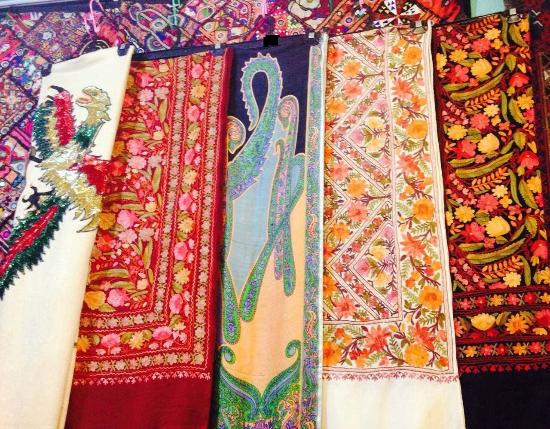
New Delhi- Textile researcher Promil Pande explores the age-old traditional craft practices of Kashmir, particularly a variety of floor coverings, in her illustrated book.
“Floor Coverings from Kashmir: Kaleen Carpets, Namdah, Gabba, Ari Rugs and Wagoo Mats” details the various types of floor coverings created in Jammu and Kashmir, tracing their origin in the case of Wagoo mats from the Indus Valley Civilization to the reign of King Zain-ul-Abidin in the 15th century in the case of pashmina shawls.
With the shawl weavers later transferring their skills to carpets, the author talks about the history, craft production networks and cultural context of Kashmir, where these exquisite handwoven floor coverings are created.
Published by Niyogi Books, “Floor Coverings from Kashmir” also traces the weaving of hand-knotted rugs back to the Pazyryk carpet made 2,000 years ago (now in the Hermitage Museum, St. Petersburg).
Weaving the story of carpet production in India, Pande explains the role of the Mughal emperors who set up imperial karkhanas or workshops, where master weavers were commissioned to weave rugs for the royal palaces.
The gradual shift from the predominant Persian style during the reign of Jahangir to a more Mughal or flower style during the reign of Shah Jahan is explained, as is the patronage of weavers by Rajput rulers in their kingdoms.
The London Exhibition of 1851 introduced Indian carpet weaving to a larger global audience, along with the exquisite pashmina shawls, also known as param narams, which led to their becoming a highly sought after luxury item of attire in Europe.
In separate chapters, the author provides details of the traditional craft networks in Kashmir that led to the production of the different types of floor coverings: Kaleen Carpets, Namdah, Gabba, Ari Rugs and Wagoo mats.
Flowcharts and illustrations of the aspects of the weaving, embroidery and production techniques are used.
The author also engages with the role of craft in a culture and how traditional crafts are understood to be part of the intangible cultural heritage of a region. The tangible and intangible craft traditions of Kashmir that are part of the cultural ethos known as Kashmiriyat, in this region, are described with examples of various crafts by the artisanal communities of Kashmir.
In the chapter ‘Constituents of Authenticity, Value and Identity in Hand-knotted Carpets’, Pande explains the technicalities of yarn, warp, weft, fringe, knot or pile and fringe, selvedge, and design features with illustrated examples. The images of carpets from Kashmir and those of rare carpets in museums around the world, show the different types of designs that characterise the types of carpets woven in various regions.
Illustrated with images of finely woven carpets, the book shows various carpet styles such as boteh, herati, mihrab, geometric, floral, tree, vase, garden and panel design. These include a pashmina, hand-knotted, kaleen carpet that the author had created for herself by a master-weaver in Kashmir, based on a pattern from a carpet in the Metropolitan Museum.
The book also details the complex process of creating a carpet design, originally done by hand by a naqash, and now created using computer software. The process of transferring this design into a series of knots on the weavers’ frame is shown through a series of images in the chapter ‘Kaleen: The Kashmiri Hand-knotted carpet’.
The use of a taleem, a notational cryptographic script, where one symbol indicates the colour, while another indicates the number of knots is clearly explained. The chapters devoted to the namdah, ari rugs and wagoo mats explore the distinctive features of these individual types of floor coverings and reveal their nature and significance in the cultural context of Kashmir.
Follow this link to join our WhatsApp group: Join Now
Be Part of Quality Journalism |
Quality journalism takes a lot of time, money and hard work to produce and despite all the hardships we still do it. Our reporters and editors are working overtime in Kashmir and beyond to cover what you care about, break big stories, and expose injustices that can change lives. Today more people are reading Kashmir Observer than ever, but only a handful are paying while advertising revenues are falling fast. |
| ACT NOW |
| MONTHLY | Rs 100 | |
| YEARLY | Rs 1000 | |
| LIFETIME | Rs 10000 | |











